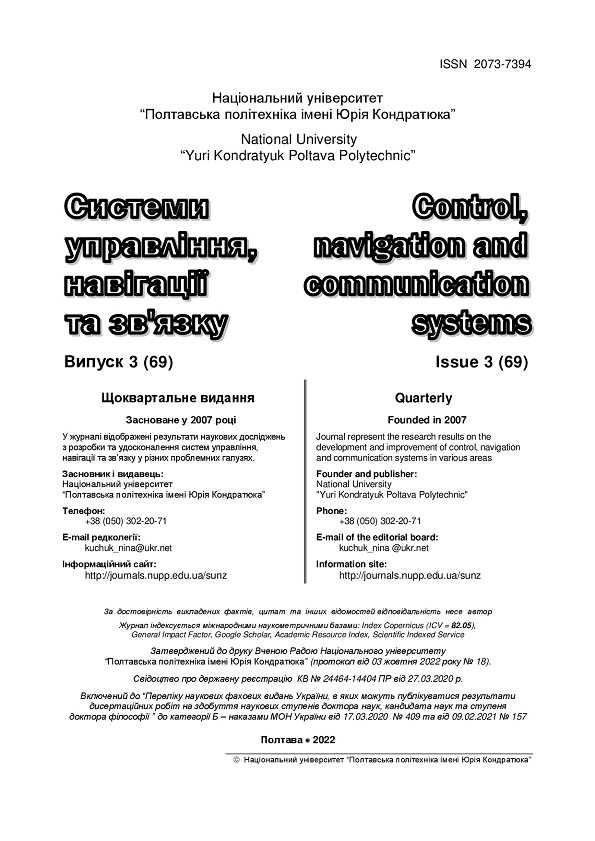ПРО ОДИН СПОСІБ АНАЛІЗУ ТОНАЛЬНОСТІ ТЕКСТІВ ЗА ДОПОМОГОЮ ШТУЧНИХ НЕЙРОННИХ МЕРЕЖ
DOI:
https://doi.org/10.26906/SUNZ.2022.3.071Ключові слова:
аналіз тональності текстів, штучні нейронні мережі, класифікатори, двонаправлена модель, алгоритм роботиАнотація
У статті детально розглянуто теоретичні відомості основного підходу до тонального аналізу тексту, проведено дослідження на тему автоматизації цього процесу за допомогою машинного навчання та використання штучних нейронних мереж. Проаналізовано основний тип архітектури нейронних мереж для роботи з класифікацією тексту та визначено оптимальну конфігурацію для програмної реалізації аналізу тональності даних. Зроблено висновок, що серед можливих конфігурацій моделей штучних нейронних мереж найкраще виконують свою функцію мережі із двонаправленими LSTM шарами у вигляді GRU конфігурації. При цьому, точність результатів напряму залежить від наявних наборів даних. Наведено результати порівняння точності результатів тренувань на обраних датасетах. Описано структуру програмної реалізації роботи сконфігурованої моделі ШНМ. Наведено приклад її застосування.Завантаження
Посилання
Cambria, Erik, et al. A practical guide to sentiment analysis. – 2017.
Ortony, Andrew, Gerald L. Clore, and Allan Collins. The cognitive structure of emotions. Cambridge university press, 1990.
Cambria, Erik, Daniel Olsher, and Dheeraj Rajagopal. SenticNet 3: a common and common-sense knowledge base for cognition- driven sentiment analysis// Twenty-eighth AAAI conference on artificial intelligence, 2014.
Swapna Somasundaran, Janyce Wiebe, and Josef Ruppenhofer. Discourse level opinion interpretation. In Proc. of the 22nd Int. Conf. on Comp. Linguistics, 2008. Vol.1 (COLING '08). Association for Computational Linguistics, USA, 801–808.
S. Poria, E. Cambria, A. Gelbukh, F. Bisio, A. Hussain. Sentiment data flow analysis by means of dynamic linguistic patterns, IEEE Comput. Intell. Mag. 10 (4). – 2013.
R.Y. Lan, Y. Xia, Y. Ye. A probabilistic generative model for mining cybercriminal networks from online social media, IEEE Comput. lntell. Mag. 9 (4). – 2014. – Рр. 31—43.
Chesley, Paula, et al. Using verbs and adjectives to automatically classify blog sentiment// Training 580.263 (2006): 233.
Zhu, Xiaodan, Parinaz Sobihani, and Hongyu Guo. Long short-term memory over recursive structures// Proc. International Conference on Machine Learning. PMLR, 2015.
Alex Graves, Jürgen Schmidhuber. Framewise phoneme classification with bidirectional LSTM and other neural network architectures// Neural Networks, 2005. – Vol. 18. – Iss.5–6.
Izard, Carroll E. The substrates and functions of emotion feelings: William James and current emotion theory// Personality and Social Psychology Bulletin 16.4 (1990): 626-635.
Ekman, Paul. "Emotions revealed." Bmj 328.Suppl S5 (2004).
Yao, Kaisheng, et al. Depth-gated recurrent neural networks// arXiv:1508.03790 9 (2015).
IMDb Datasets [Online] – Available from: https://www.imdb.com/interfaces/
Luong, Minh-Thang, Richard Socher, and Christopher D. Manning. Better word representations with recursive neural networks for morphology// Proceedings of the seventeenth conference on computational natural language learning. 2013.
English word vectors[Online] – Available from: https://fasttext.cc/docs/en/english-vectors.html
Ian Miell, Aidan Hobson Sayers. Docker in Practice. - Manning Publications. – 2019.




